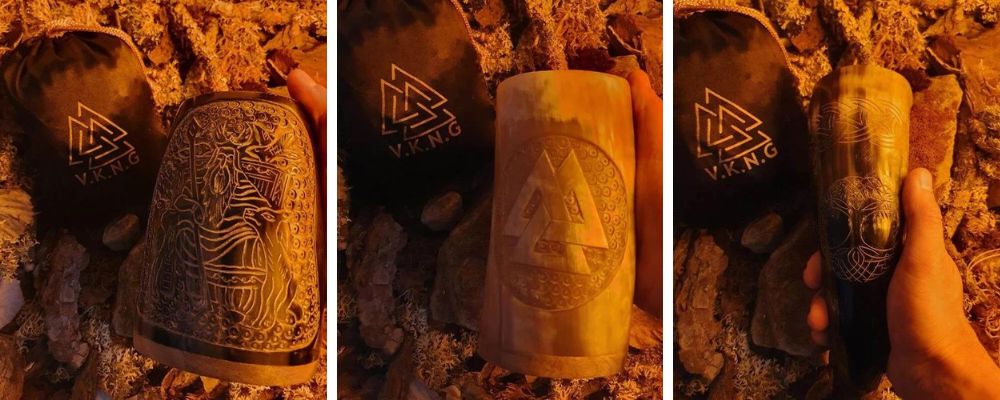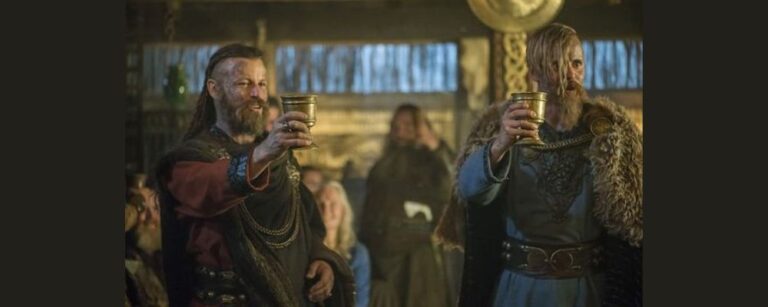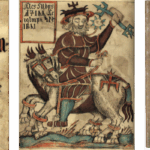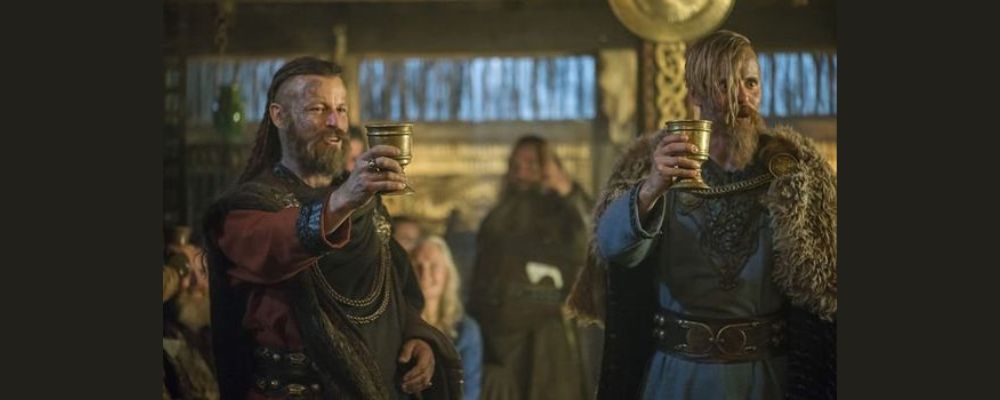
Today we imagine the Vikings saying “Skol” when they raised their cups, or drinking horns, during a feast. But what does Skol mean in Old Norse and is that really what the Vikings said? Toasts were a complex social ritual in Viking society that involved much more than just raising a glass. Let’s look at how toasts were really made in the Viking Age.
Skol or Skål?
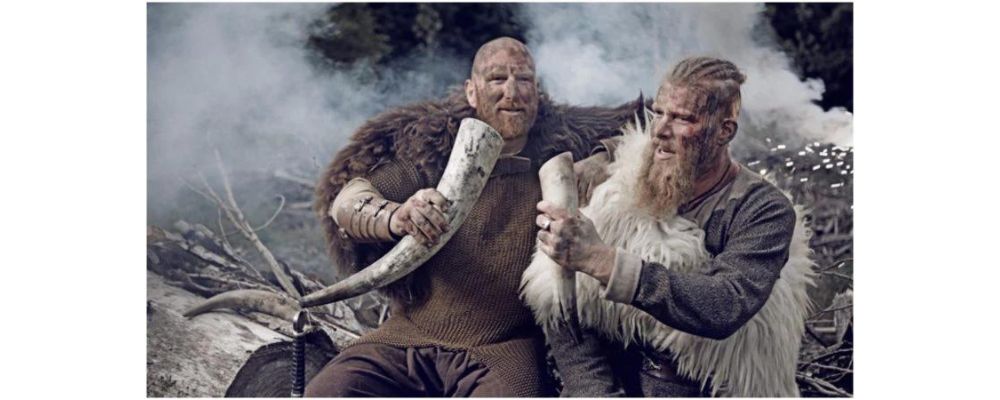
While today we say Skol, it was written as Skål in old Danish, Norwegian, and Swedish, and as Skál in Faroese and Icelandic. Yes, it was a kind of “cheers”, but it actually meant “bowl” or “cup” and was derived from the word “kál”, which is “to drink”. Perhaps a better translation is “bottoms up”.
Skol doesn’t belong in the Scandinavian lexicon and is rather the English way of writing the world because it better approximates how it should be said. Skol!
But don’t make the mistake of confusing Skol with Skoll in Old Norse. The latter means “mocking one”, and along with Hati, “hating one”, Skoll is one of the two wolves that chase the sun and moon for eternity. They will finally catch them at Ragnarök, plunging the cosmos into darkness.
While this toast is used in modern Scandinavian countries, there is no clear evidence as to whether it was used in the Viking Age. But toasts certainly were made.
Viking Feasts
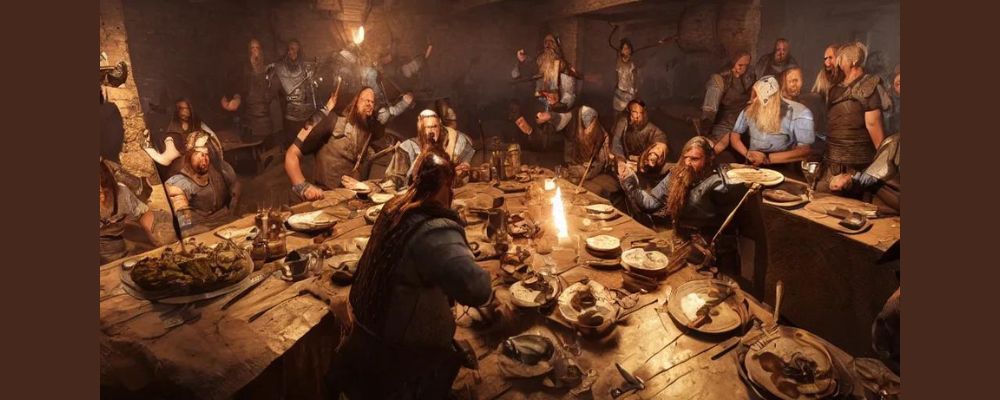
Feasts played a central role in the social rituals of the Viking Age. They were used to reinforce hierarchies, ratify laws, and for making oaths and vows. They were integral to maintaining social order. While they may not have had the pomp we associate with feasts at the court of a French or English king, there were lots of rules and customs.
Researchers believe that the Vikings held season feasts around Yule and Mabon (harvest), and that they could also be held at other times for special occasions such as an important wedding alliance or sharing the spoils of a successful raiding season.
A feast would often start with the sacrifice of an animal to the gods, and the meat was then served at the feast. Horses were often sacrificed, not because the Vikings considered their horses livestock, but rather because they were highly valued and therefore made an appropriate sacrifice. They were not commonly eaten outside of this ritual.
Those present at the feast would eat better than they did on most other days, and they would also drink copious amounts of alcohol. This myth about Viking culture seems to have been true! While the daily consumption of alcohol was mostly low potency and about making water safe to drink, at feasts, participants would drink stronger meads and wines.
Read about what the Vikings ate and drank here.
Feasts tended to last for days and were accompanied by entertainment such as skalds, singers, and poets reciting the sagas and other works. This was also a time when oaths of loyalty were made between leaders and their warriors, as discussed in our previous article [link]. It was also a time when many toasts were made.
Viking Toasts
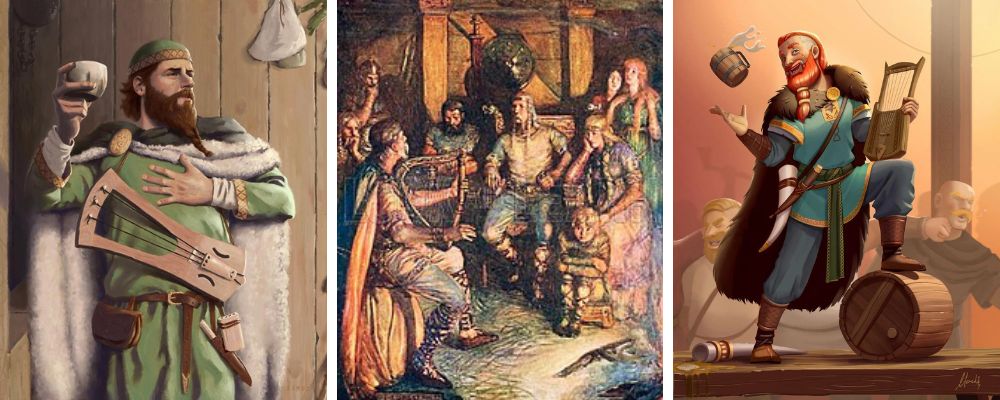
In the Viking Age, toasts seem to have been much more complex than just raising your glass, or drinking horn, and saying Skol. There were assigned toastmasters who were responsible for ensuring that proper toast rituals were performed, and skalds and others talented with words were also called on to recite elaborate toasts.
Skalds would compose and deliver witty toasts according to who was present, their recent victories, and the successes of their ancestors. In fact, many of the Skaldic poems that survive today were originally composed as toasts. There might be many opportunities throughout the recital to have a celebratory sip. There were also moments when a portion of the drink might be tipped on the ground for those who have fallen. These toasts that celebrated deeds and victories were called “bragafull”.
In addition to these, shorter ritual toasts were led by the toastmaster. Cups were prepared and a toast made, and then the same cup passed to the other important people there to take a sip, and perhaps make a toast of their own. These toasts were called “minni”, which derives from the word for memory. Those further down the social hierarchy would have simply joined the toast by taking a sip from their own cup.
It is perhaps no surprise that when the dwarves killed Kvasir they used his blood to create the Mead of Poetry, which granted mastery over the spoken word, since the Skalds were called on to make toasts.
Examples of Viking Toasts
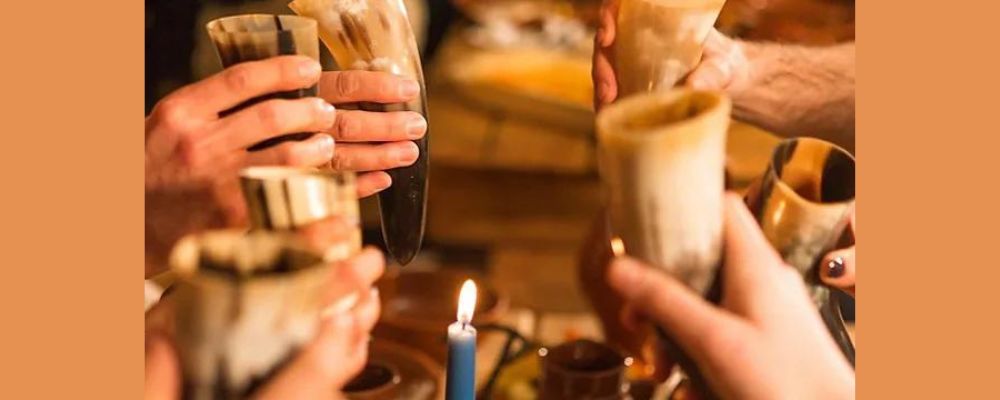
Several examples of Vikings making toasts at feasts survive in the Viking sagas. There are two good examples in the Saga of Hakon the Good, though they are complicated by the fact that Hakon was a Christian who grew up in England and therefore had some difficulty performing the proper rituals.
In the first example, Sigurd, Earl of Hlader, holds a feast at a temple. Once the sacrifices are done, goblets are filled.
And first Odin’s goblet was emptied for victory and power to his king; thereafter, Niord’s and Freyja’s goblets for peace and a good season. Then it was the custom of many to empty the brage-goblet; and then the guests emptied a goblet to the memory of departed friends, called the remembrance goblet.
After this, a skald is called upon to sing a ballad that he has composed about Sigud himself.
Of cup or platter need has none
The guest who seeks the generous one, —
Sigurd the Generous, who can trace
His lineage from the giant race;
For Sigurd’s hand is bounteous, free, —
The guardian of the temples he.
He loves the gods, his liberal hand
Scatters his sword’s gains o’er the land-“
At a later festival, King Hakon the Good joins Sigurd at the feast but struggles due to his Christian beliefs.
Now when the first full goblet was filled, Earl Sigurd spoke some words over it, blessed it in Odin’s name, and drank to the king out of the horn; and the king then took it, and made the sign of the cross over it. Then said Karl of Gryting, “What does the king mean by doing so? Will he not sacrifice?” Earl Sigurd replies, “The king is doing what all of you do, who trust to your power and strength. He is blessing the full goblet in the name of Thor, by making the sign of his hammer over it before he drinks it.”
Sigurd covers for Hakon by saying that he is making the sign of the hammer rather than the cross. But what these two stories make clear is that the gods were invoked with each new toasting cup.
Toasts in the Viking World
So, in the Viking Age, toasts required that you call on the support of the gods and then praise members of the community who have made a difference. In that sense, it is a way to show gratitude for the important people in your life.
But raising a cup and shouting Skol definitely still has a place in modern Viking traditions. And it is best done with a traditional Viking drinking horn.
